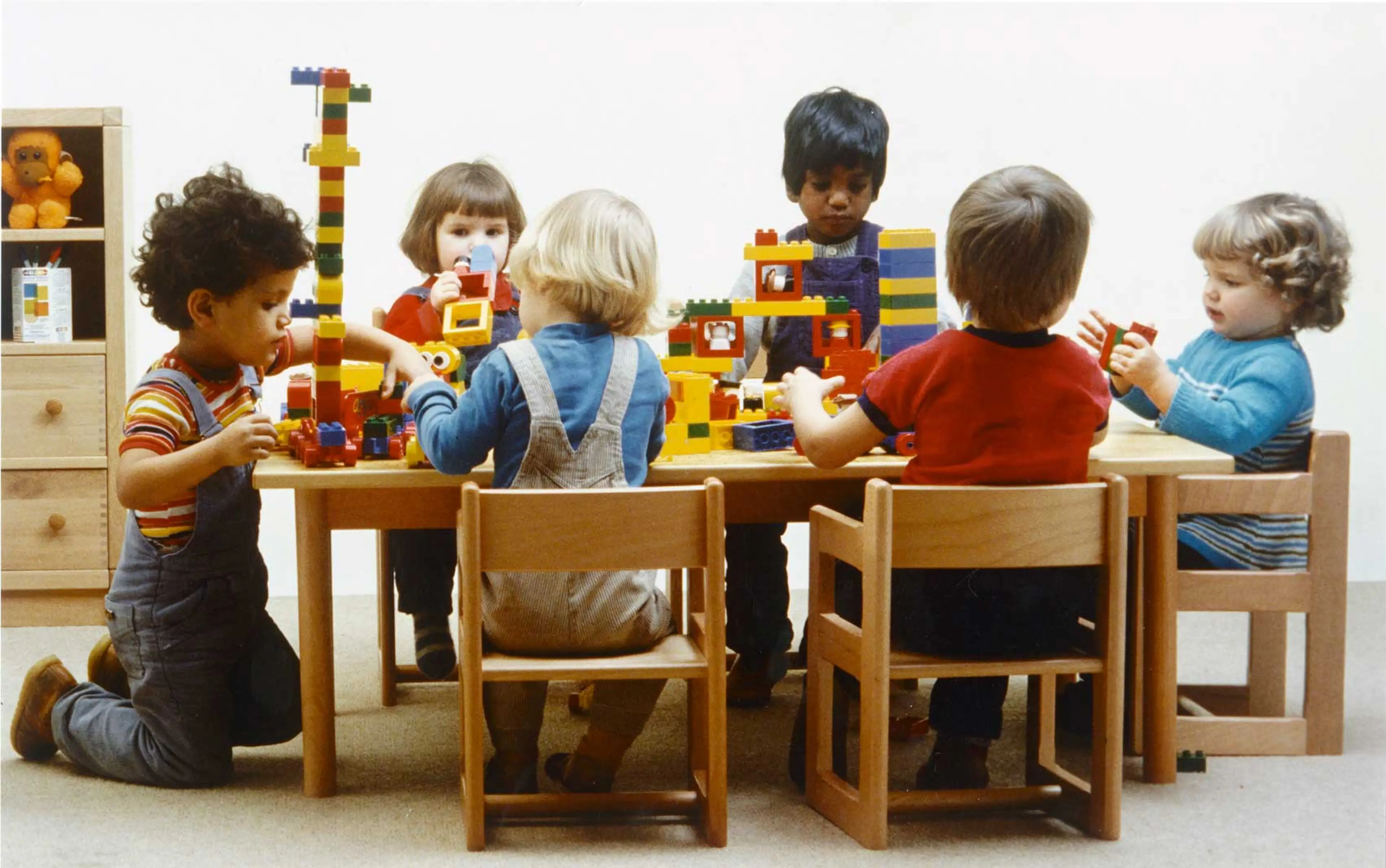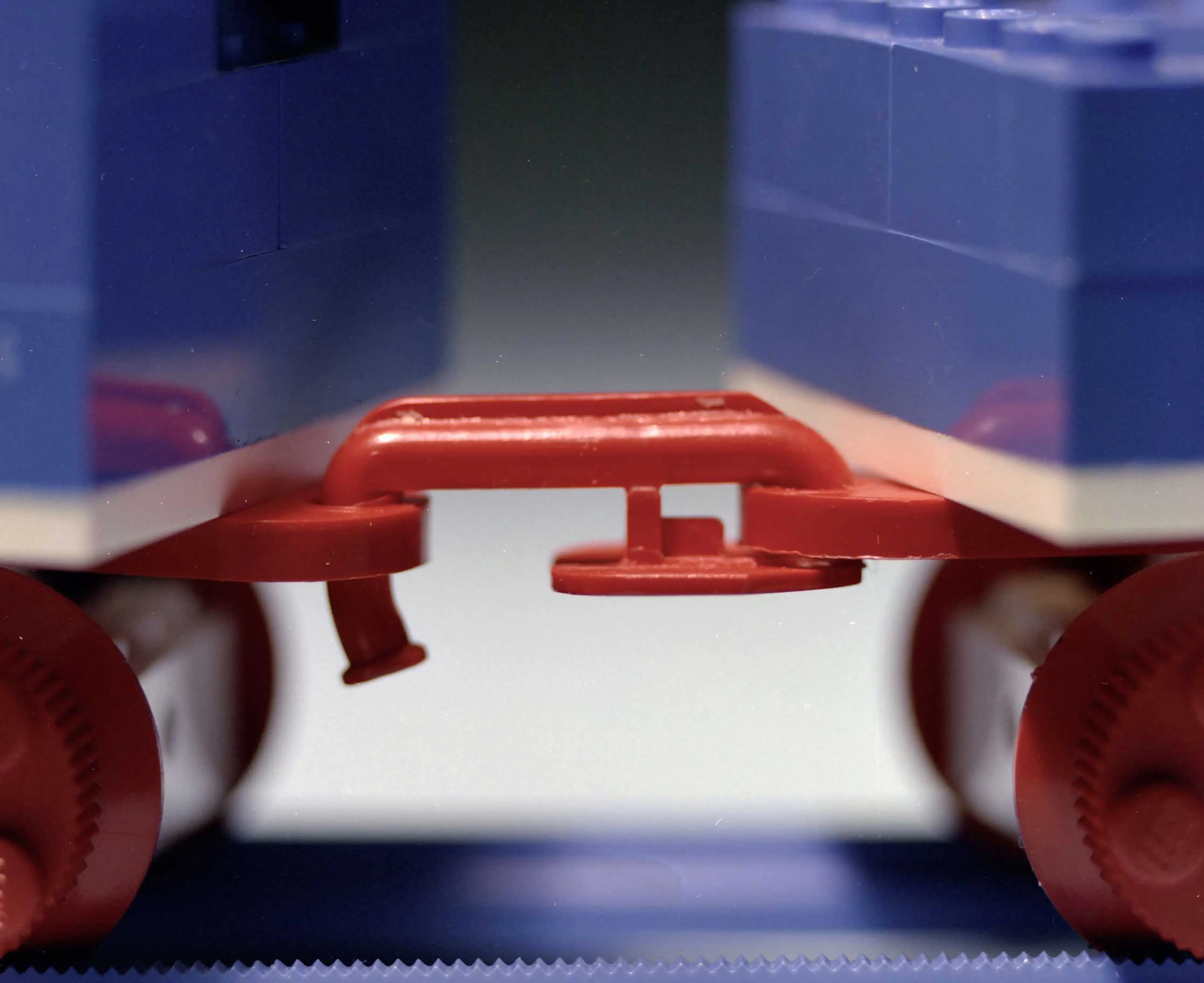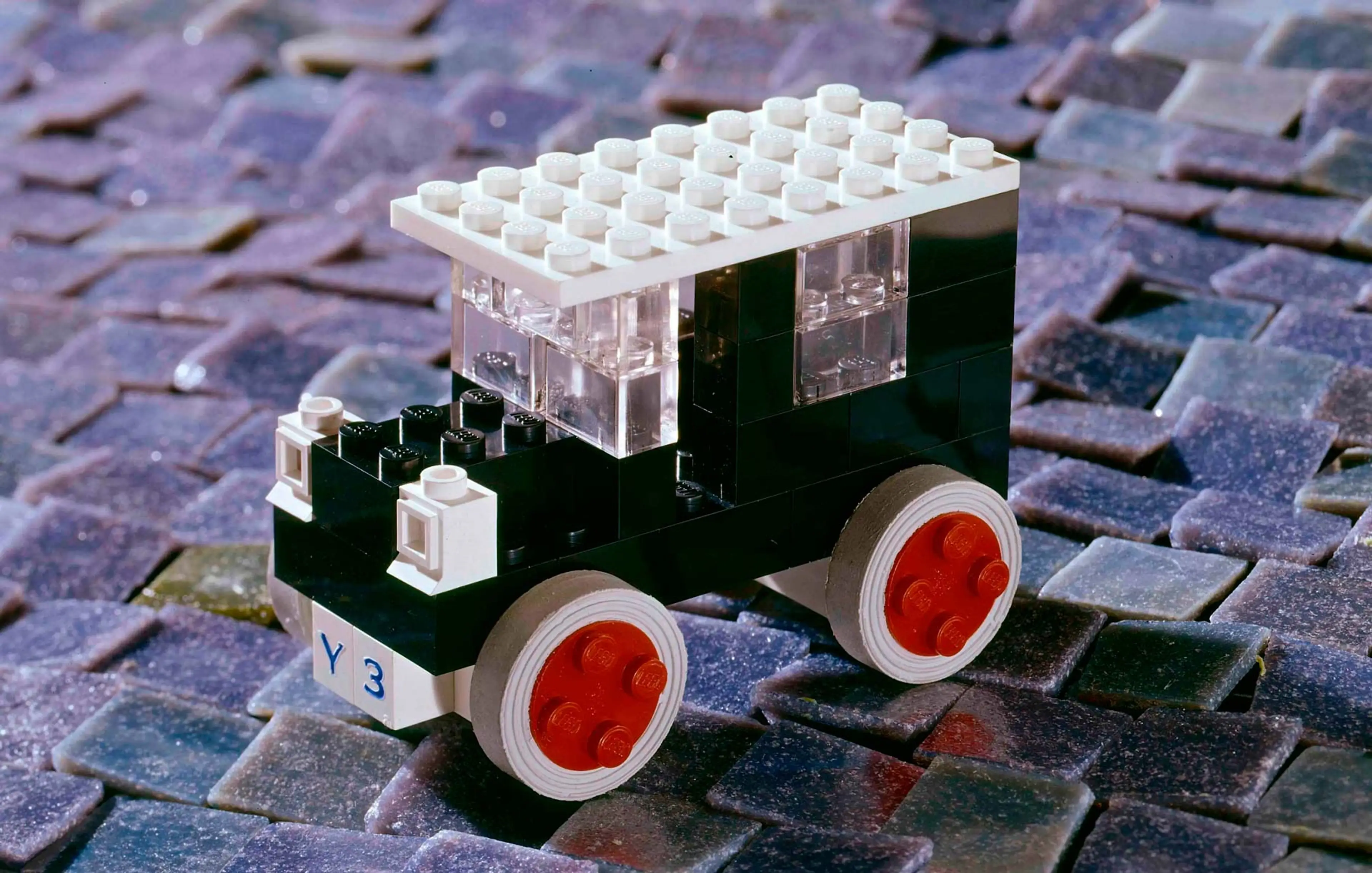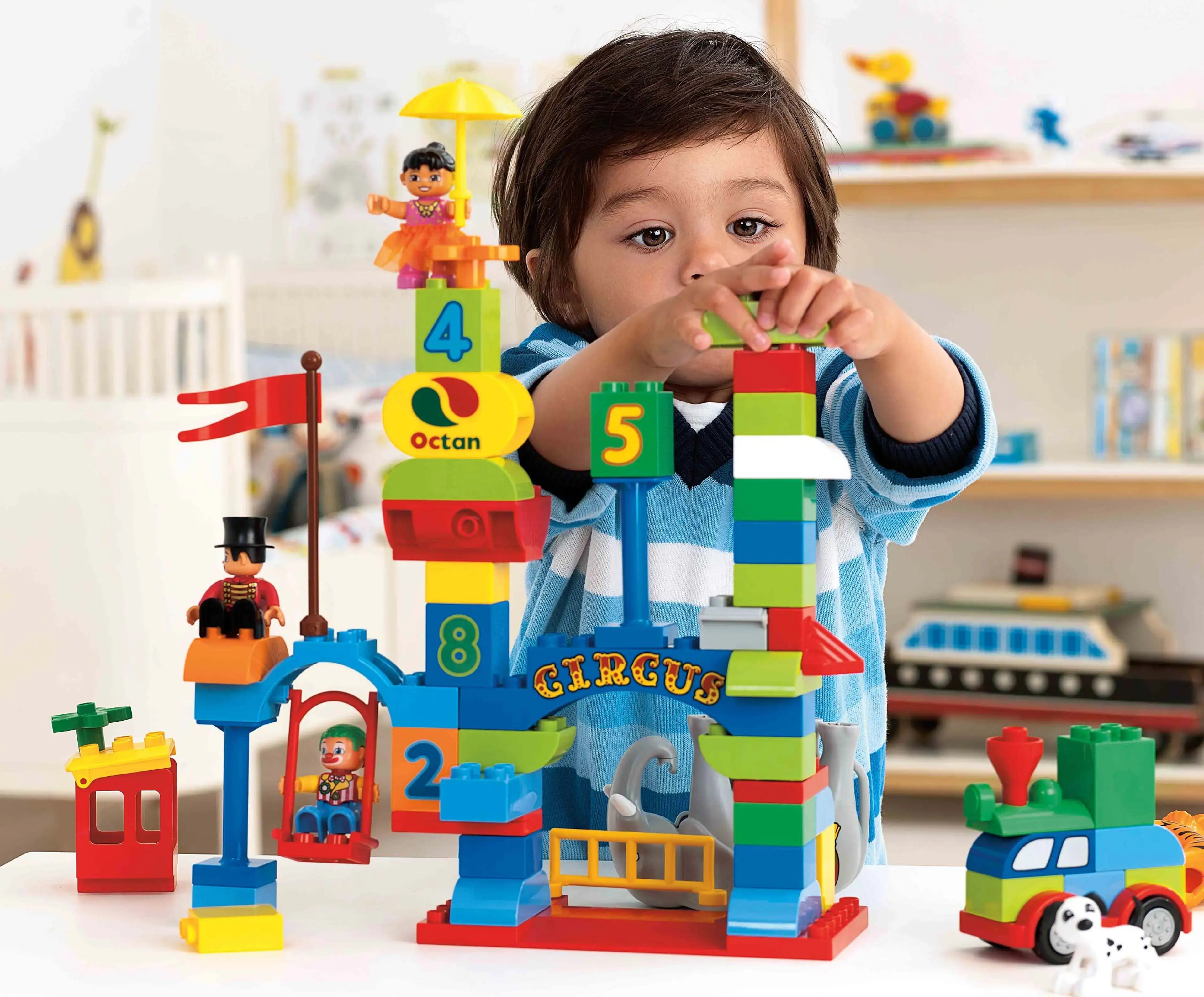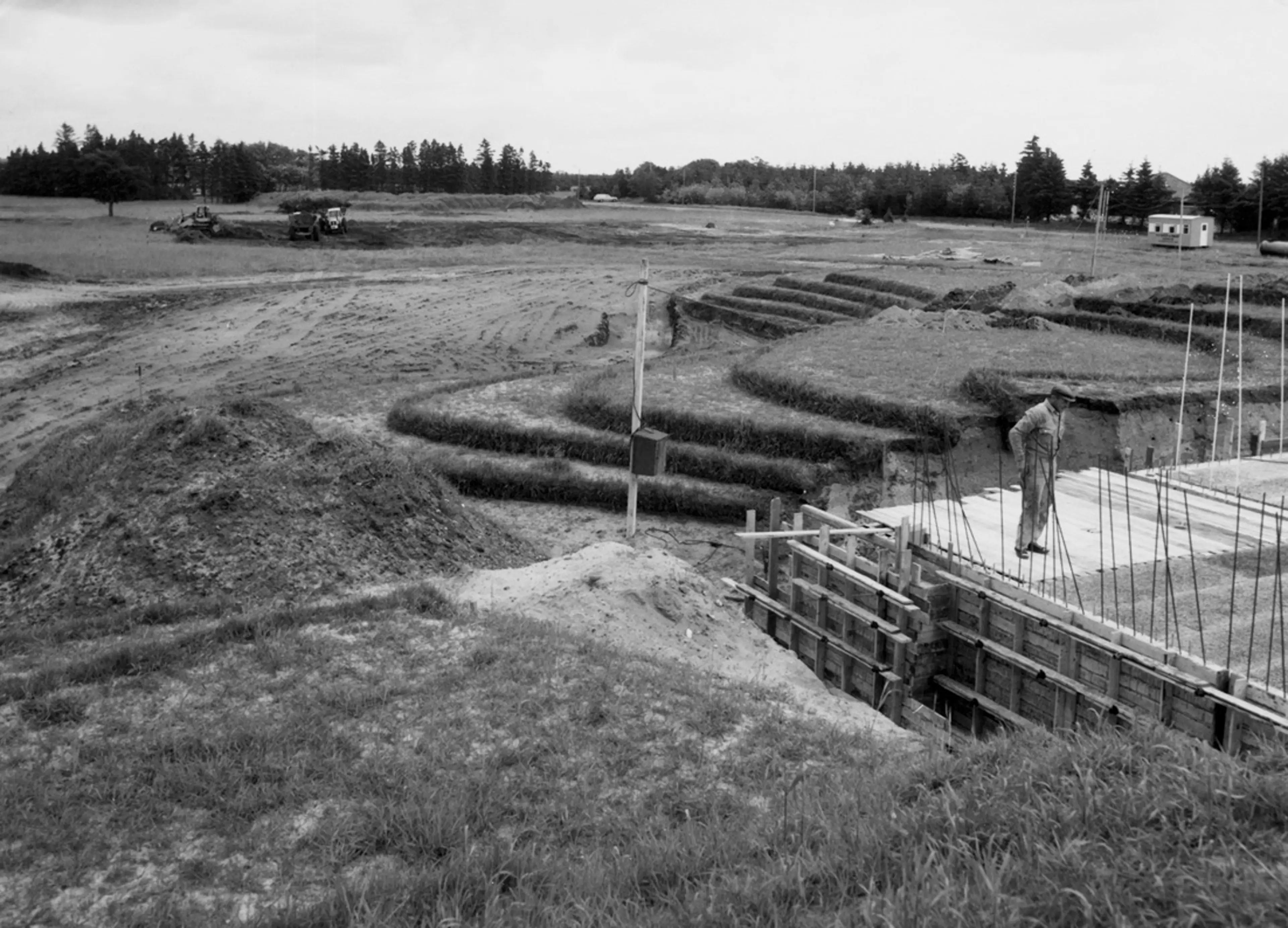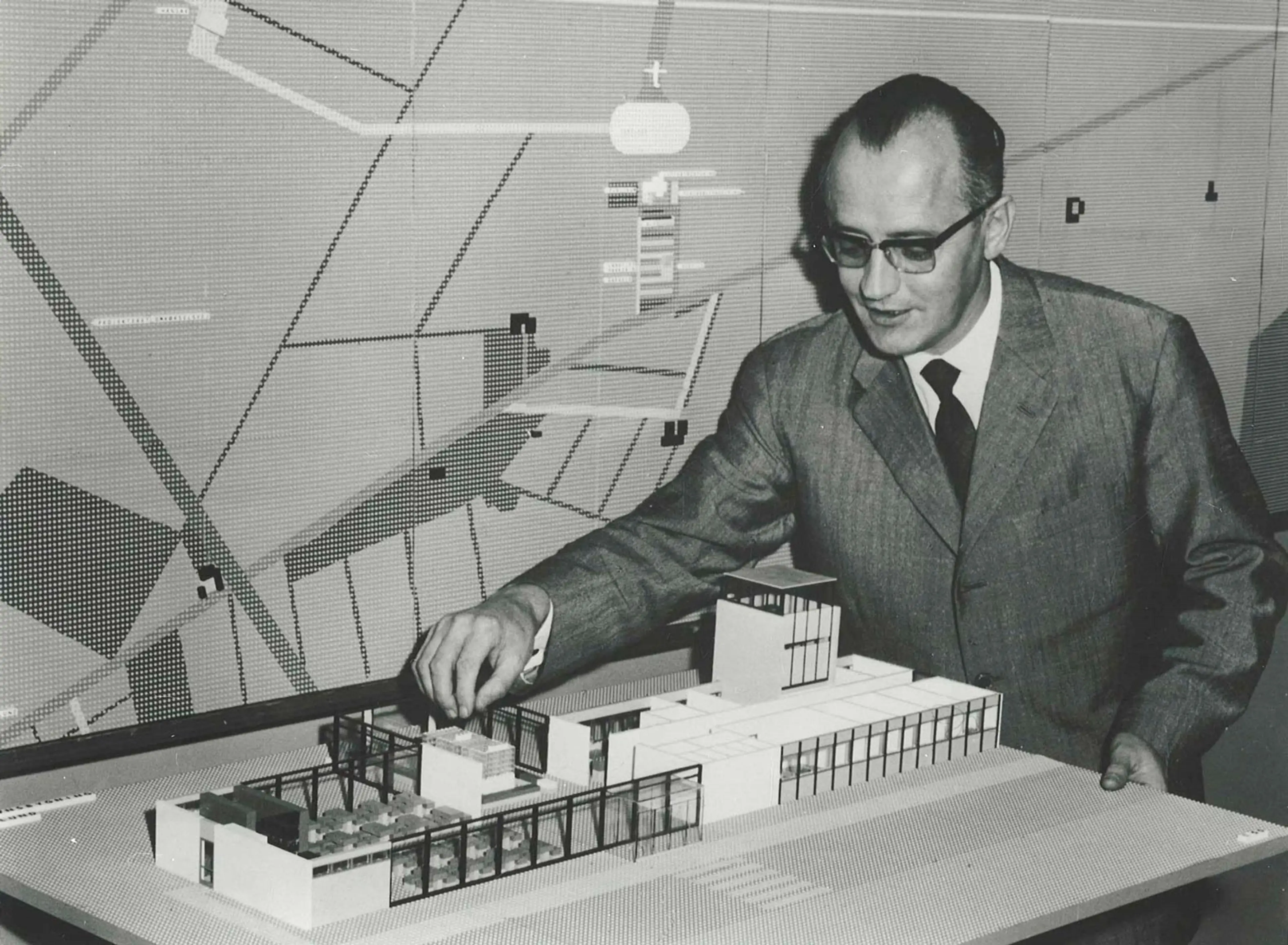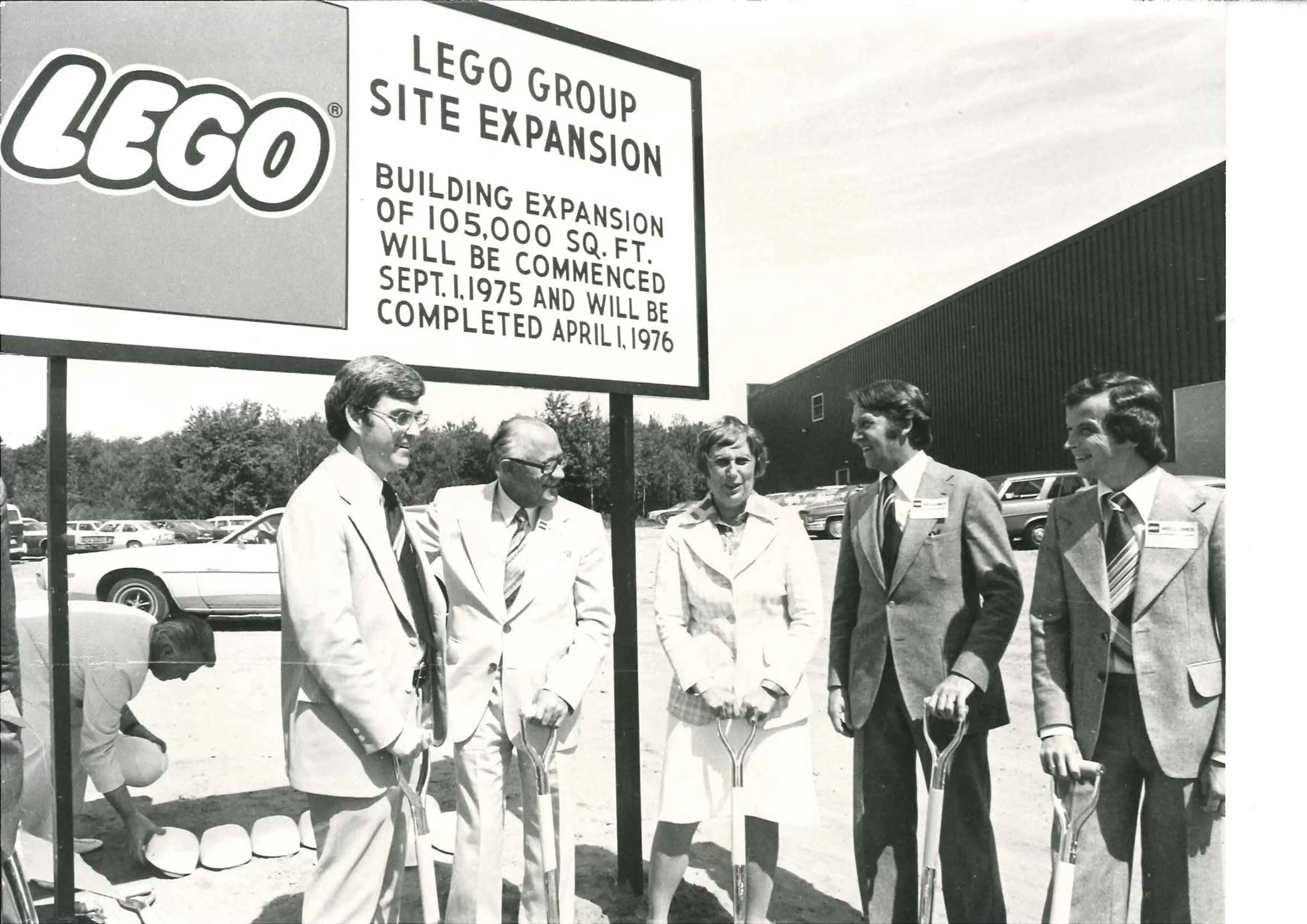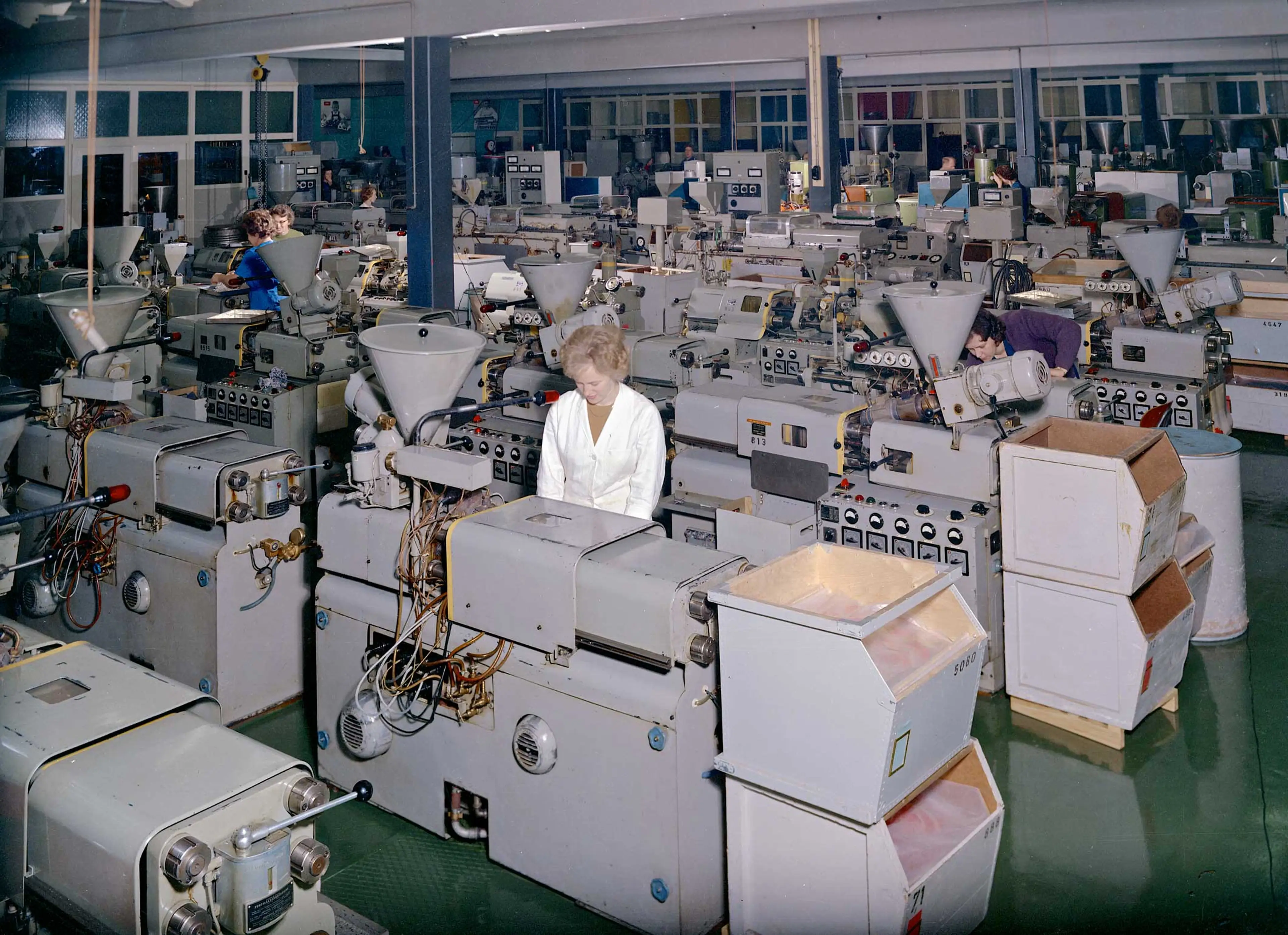With the interlocking system introduced in 1958 the LEGO® brick becomes a building element with unlimited potential. Godtfred Kirk Christiansen’s cousin, Dagny Holm, who joins the company in 1961 as a model builder, has a skilled eye, which sees that elements combined with others can become anything in the world, buildings, castles, figures and animals. A brick assumes a face, an expression or something no one has previously thought of. Dagny Holm, in other words, revolutionizes the art of model building.
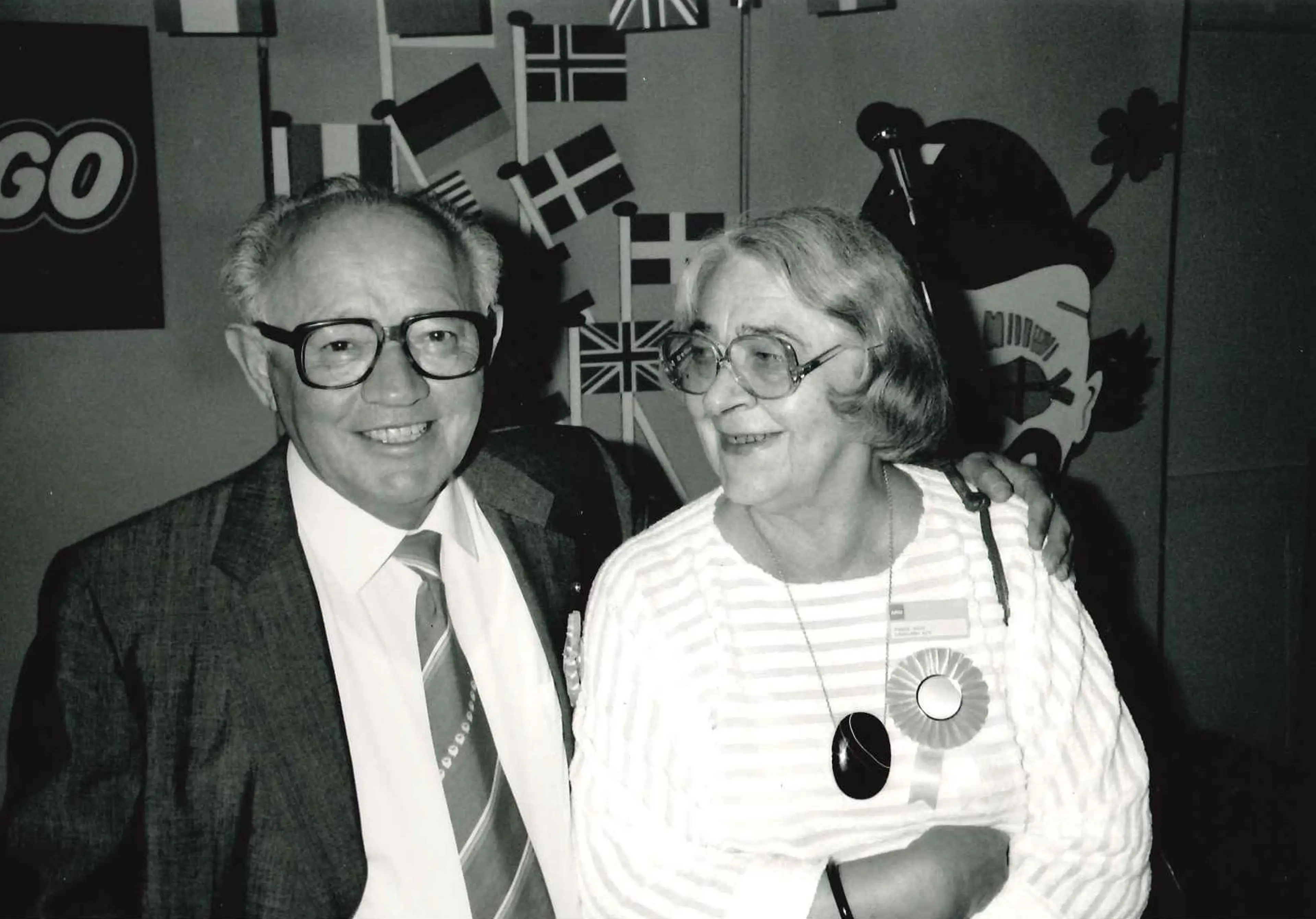
Model builder Dagny Holm and second generation LEGO® owner Godtfred Kirk Christiansen
Model building catches the public eye and inspires everyone who works with the LEGO product. Schoolchildren, members’ associations and retailers flock from far and near to Billund. People, on visits to the LEGO factory, queue to see the LEGO Group’s exhibition of finished models. By the mid-1960s the company is entertaining 20,000 visitors a year.
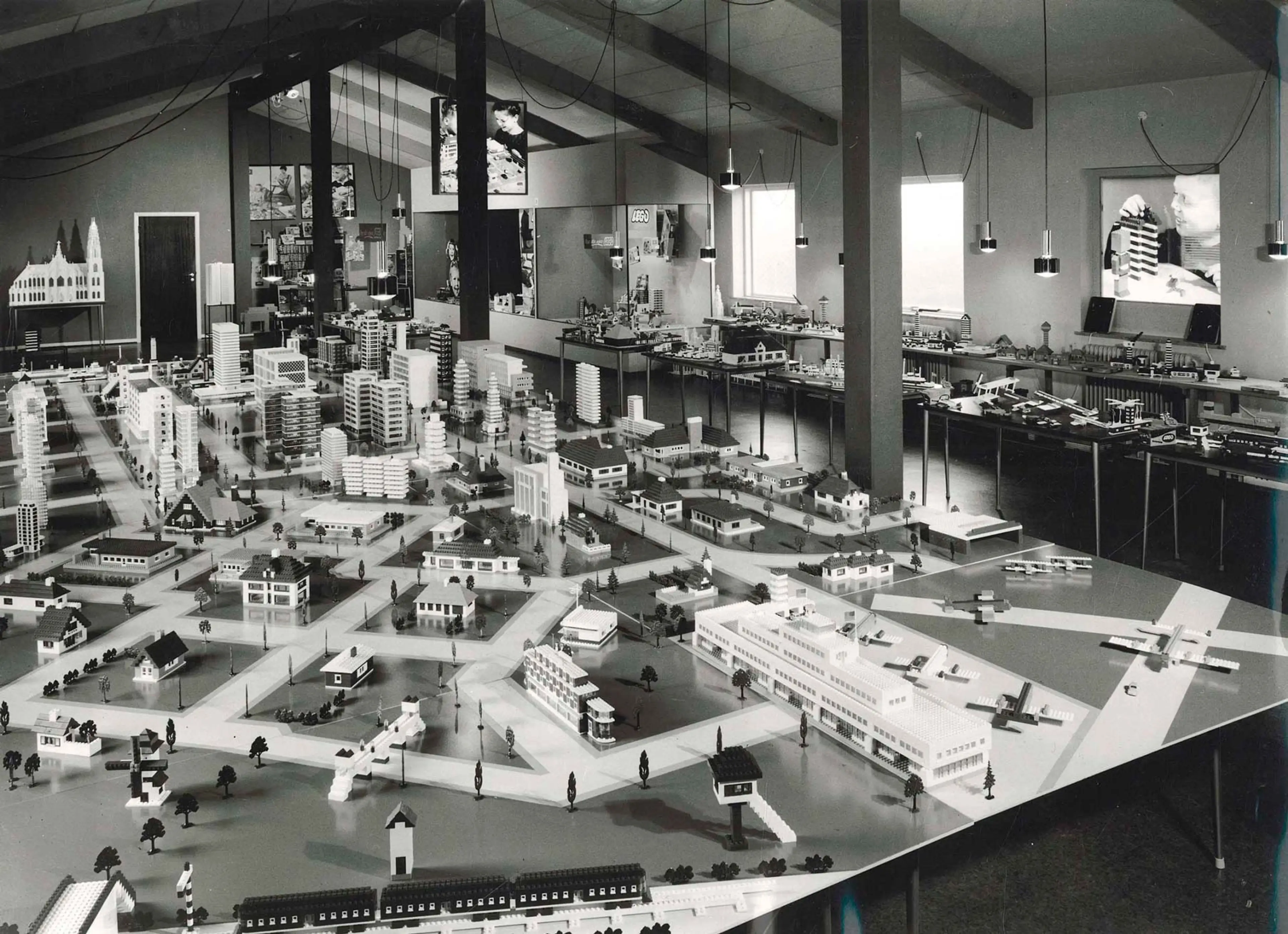
LEGO® showroom 1961
LEGOLAND® family park
As the factory and model exhibition gradually find themselves unable to cope with the visitor pressure, Godtfred Kirk Christiansen comes up with the idea of a display of LEGO models in the open air. He persuades Arnold Boutrup, chief designer at a department store in Copenhagen and the man behind the city’s most imaginative sales window displays, to create a real LEGO land.
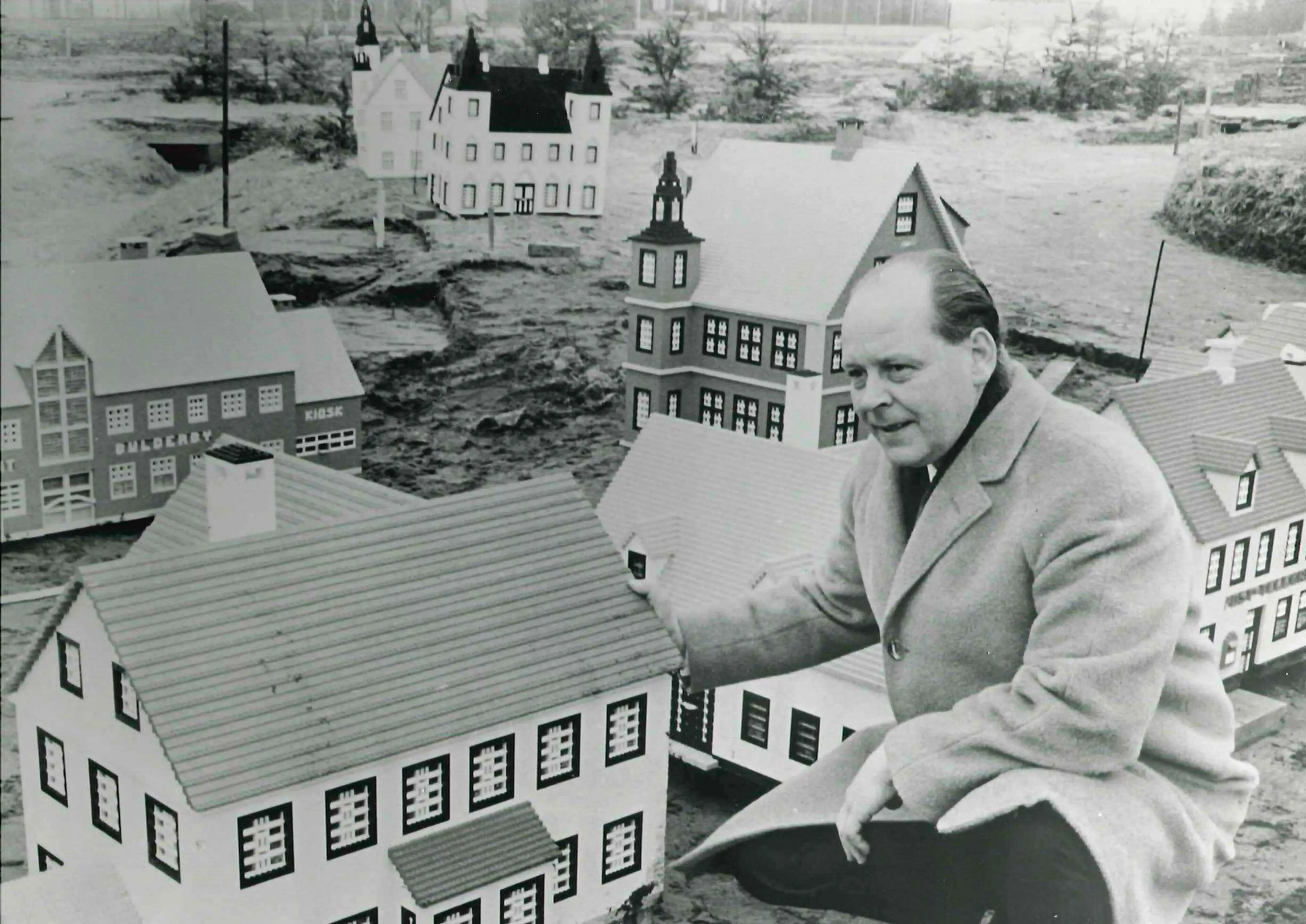
Arnold Boutrup
Thousands of lorry loads of earth and turf are moved in to transform an area of flat moorland in Billund into an undulating Miniland with interesting landscapes and inspiring houses, all built with ordinary LEGO bricks by model builder Dagny Holm and her team. A real family paradise with amusements such as a large LEGO train, puppet theatre, driving school with a clear educational purpose - and thousands of LEGO bricks for children and adults to play with. In its first season the park attracts 625,000 visitors, overwhelming in every sense especially as the estimate had been for “only” half that number.
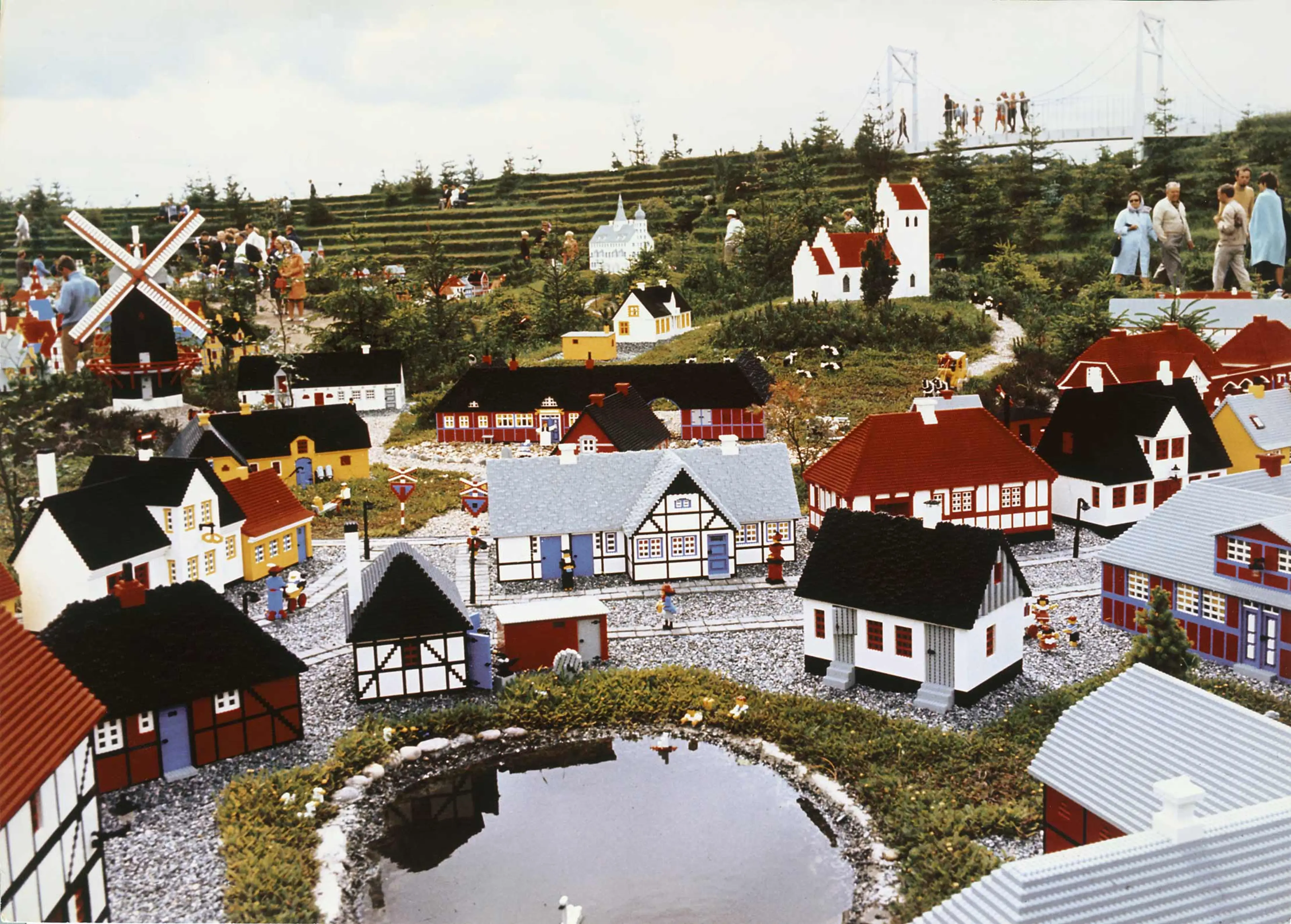
The Miniland in LEGOLAND Billund, 1968
Erik Tapdrup, former boss of the development department LEGO Futura, later recalls the events of the opening day at LEGOLAND: so many visitors arrive that Godtfred Kirk Christiansen summons Erik Tapdrup to help to wash up in the restaurant kitchen. As Erik Tapdrup arrives in the kitchen, he spots Helge Torpe, LEGO marketing director, washing dishes and the two executives stand shoulder to shoulder at the sink for the rest of the day. With such an immense success, it is all hands on deck.
Going global
The success of the original LEGOLAND® in Billund, repeats as new LEGOLAND parks in Europe, North America and Asia opens from the mid-1990s onwards. Each park contributes creative LEGO models and an enjoyable experience in support of the LEGO brand.
Following on the LEGO Group’s economic crisis, the then four LEGOLAND parks are sold to Merlin Entertainments in 2005. The sale secures for the LEGO Group essential resources in its efforts to reverse the negative operating results that the company experienced in 2003 and 2004. Kirkbi A/S, the LEGO owner family’s investment company, is a shareholder in the Merlin Entertainments Group and appoints representatives to the Merlin Entertainments board. This ensures that, in close co-operation with the LEGO Group, the parks are operated with due respect to the values of the LEGO brand. In 2020, Kirkbi A/S and two leading investment companies joined forces behind Merlin Entertainments with Kirkbi A/S having 50% ownership.
During the period 1996-2021, eight new LEGOLAND parks are opened in different parts of the world. LEGOLAND Park number two opens in Windsor, UK, in 1996. LEGOLAND California in Carlsbad, north of San Diego, USA, follows in 1999. LEGOLAND Deutschland opens in the southern German town of Günzburg in 2002. In 2011, LEGOLAND Florida opens and in 2012, LEGOLAND Malaysia follows. Park number seven and eight opens in Dubai (2016) and Japan (2017) and park number nine, LEGOLAND New York, opens to guests in 2021.
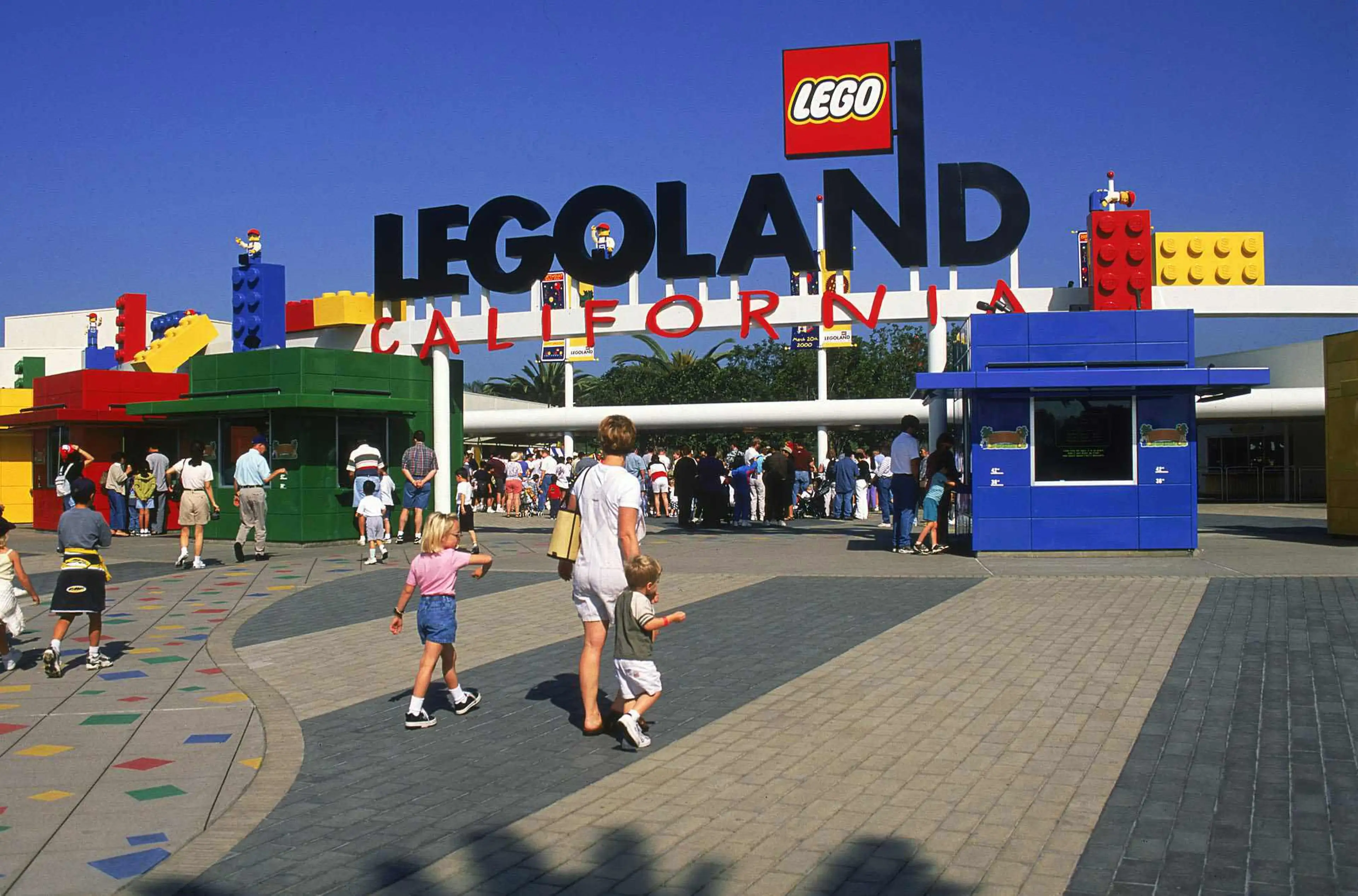
The main entrance at LEGOLAND® California
